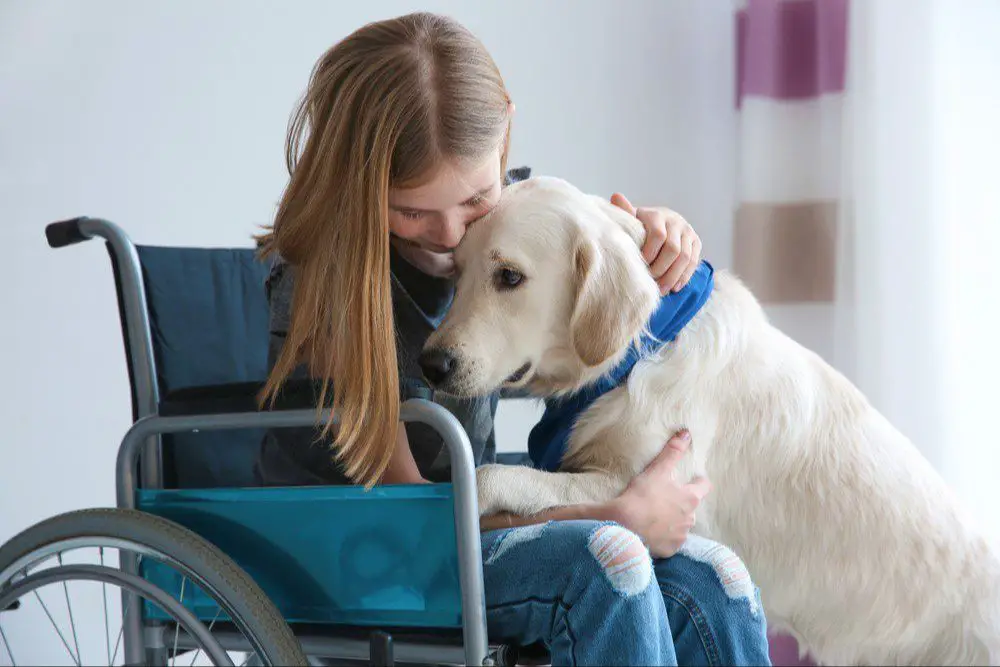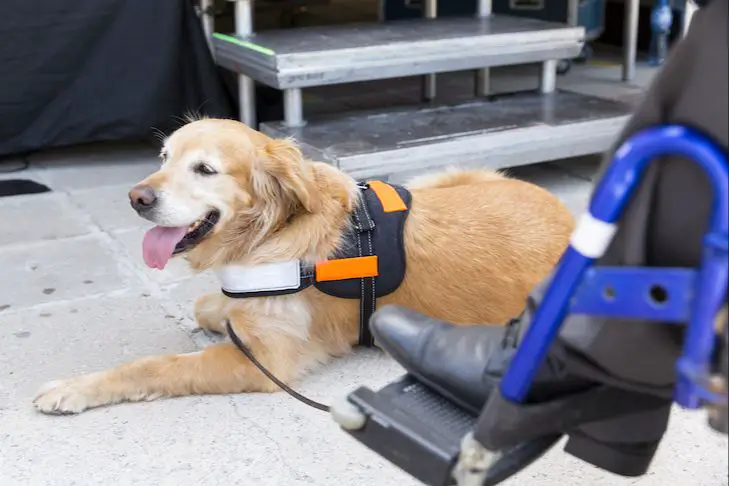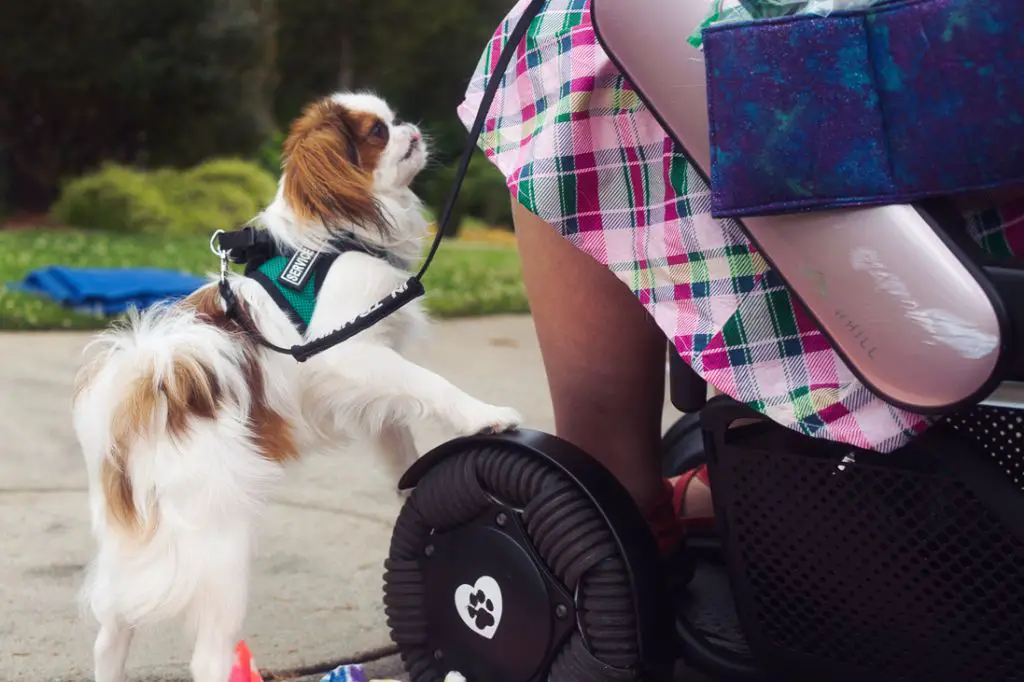Introduction
Service dogs are trained to perform tasks that assist people with disabilities. They help with mobility, psychiatric disorders, medical conditions, hearing loss and more. When choosing a service dog breed, it’s important to consider factors like temperament, trainability, size, energy level, health and grooming needs.
The right service dog breed depends on your individual needs and lifestyle. You’ll want a dog that is intelligent and focused enough for training, while still having an affectionate and gentle temperament. Their size should suit your physical abilities and living space. Energy level, grooming requirements and common health issues in the breed are also key considerations. While some breeds are very popular for service work, there’s a wide variety of dogs that can be successful with proper training.
In this article, we’ll go over the key factors to weigh when selecting a service dog breed. We’ll also highlight some of the most common and effective breeds used as service dogs. With the right information and guidance, you can find the perfect canine partner to enhance your independence.
Temperament
A service dog needs to have a stable, calm temperament. Eagerness to please, attentiveness, and lack of aggression or timidity are key traits according to Becoming a Service Dog: Training and Temperament Are Key Factors. The dog should not be easily distracted or reactive to strangers or unfamiliar environments. A service dog candidate should be relaxed and confident.

Service dogs work in a variety of public settings so they cannot be nervous, shy, excitable or high-strung. As noted in Evaluating Service Dog Candidates At the Shelter: 5 Traits to Look For, the ideal temperament is “super balanced, easy going, calm, and not easily stressed or frazzled.” The dog’s focus needs to remain solely on their human partner.
Trainability
One of the most important traits for a service dog is trainability. The dog needs to be intelligent enough to learn a variety of commands and tasks to assist their handler. Some of the most trainable dog breeds include Golden Retrievers, Labrador Retrievers, German Shepherds, and Poodles (AKC). These breeds tend to be focused, engaged, and eager to please, making them ideal candidates for service work.

In addition to intelligence, a high food motivation can aid training. Breeds like Labrador Retrievers are highly food-motivated, which allows trainers to use food rewards to reinforce desired behaviors. A dog that is willing to work for food rewards can pick up new commands quicker. Other motivators like praise, play, and toys can also be used for reinforcement.
Ultimately, the most trainable dogs for service work are intelligent, people-focused breeds that are responsive to their handler and willing to work. With proper socialization and training from a young age, many dogs can become well-suited for assisting a person with disabilities.
Size
The size of a service dog depends on the individual handler’s needs. Larger dog breeds, such as Labrador Retrievers or German Shepherds, are commonly used for mobility assistance tasks like guiding a blind handler or pulling a wheelchair. They have the strength and stamina for these physically demanding jobs.
However, handlers should also consider restrictions on size if they will be traveling by air or living in certain housing where large dogs may not be allowed. Smaller dogs like Poodles or Cavalier King Charles Spaniels can be excellent service dogs too, especially for those with psychiatric or medical needs. Their compact size makes them easy to take anywhere.
According to the Americans with Disabilities Act (ADA), there are no restrictions on breed or size for service dogs. The key is finding a dog with the proper temperament and ability to perform trained tasks that mitigate their handler’s disability, regardless of their physical size.
Energy Level
An important consideration when choosing a service dog breed is matching their energy level to your own lifestyle and activity levels. As one Reddit user advised, “I like a moderately high energy dog with high work and food drive with medium to low toy drive. Low to Moderate prey drive.” [1] However, a high energy dog may be too demanding for some handlers. According to USServiceAnimals.org, “A service dog can’t be hyperactive, but also shouldn’t be lazy or unwilling to put in the work when you need it.” [2] The ideal energy level depends on your own activity levels and lifestyle. Matching a service dog’s energy to your own helps ensure they can work steadily without becoming restless or distracted.
Health
Selecting a dog breed that is less prone to health problems can help ensure a long working life as a service dog. According to the RSPCA, some breeds like pugs and bulldogs are prone to breathing difficulties, spinal problems, eye disease, and skin fold dermatitis due to selective breeding and exaggerated features.[1] Other breeds like Labrador Retrievers have relatively fewer health issues. Common health problems in dogs include hip and elbow dysplasia, luxating patellas, eye diseases, allergies, bloat, and obesity.[2] Researching the typical health issues for your preferred breeds can help inform your decision.
[1] https://www.rspca.org.uk/adviceandwelfare/pets/dogs/puppy/pedigreedogs/health
[2] https://www.forbes.com/advisor/pet-insurance/dog-breeds-highest-risk-health-problems/
Grooming
When choosing a service dog breed, opting for one with a low maintenance coat is preferable to avoid extensive grooming needs. Many small breeds like Shih Tzus and Brussels Griffons have hypoallergenic coats that require minimal brushing and bathing.
Shedding can also be a concern for some handlers, so non-shedding or light shedding breeds are ideal. Poodles and poodle mixes tend to shed less than heavy shedders like German Shepherds. Additionally, regular brushing and bathing can help reduce loose hair and dander. Overall, prioritizing low maintenance grooming needs will make owning a service dog more convenient and manageable.
Popular Breeds
Three of the most popular breeds for service dogs are golden retrievers, Labrador retrievers, and poodles. Each breed has its own unique pros and cons to consider.
Golden retrievers are known for their friendly nature and high intelligence. They are eager to please and highly trainable, making them a top choice for service work. However, their long coat requires regular grooming. Golden retrievers also have a predisposition for cancer later in life. [1]

Labrador retrievers have an easygoing temperament and trainability similar to golden retrievers. Their short coat is low maintenance. One downside is Labs’ tendency toward obesity if overfed. They are also prone to joint disorders such as hip and elbow dysplasia. [2]
Standard poodles are smart, athletic dogs who are hypoallergenic due to their non-shedding curly coat. However, they require extensive grooming to keep the coat trimmed. Poodles can sometimes be independent thinkers, which can make training more challenging compared to other breeds. [3]
Acquiring a Service Dog
There are two main ways to acquire a service dog. The first is to get the dog through a training program. According to Pettable, professional service dog trainers typically charge $150-$350 per hour. Overall, the cost to train a service dog through a program can be upwards of $25,000 when accounting for the cost of the puppy, medical bills, equipment, and the extensive training.

The second option is to owner-train your service dog. This involves less overall cost, but requires a significant time investment on your part to properly train the dog. Owner training a service dog can take 1-2 years depending on your commitment and the dog’s abilities. You may also need to hire professional trainers for more advanced skills. Group obedience classes can range from $150-$250 per hour.
When weighing your options, consider your budget, time constraints, and access to professional service dog trainers in your area. Proper service dog training is intensive and requires a serious commitment, so be realistic about your ability to fully train a dog yourself if going the owner-training route.
Conclusion
When selecting a service dog breed, it’s important to consider your individual needs and lifestyle. Key factors include temperament, trainability, size, energy level, health, and grooming requirements. The breed you choose should have an even temperament, be highly trainable, and fit your activity level. Larger breeds often make better mobility service dogs, while smaller breeds can be ideal for psychiatric and medical alert work. Do your research to find breeds prone to health problems and extensive grooming needs that may not suit your lifestyle.
There is no one-size-fits-all answer to choosing the best service dog breed. The most important thing is finding a dog whose physical and mental attributes align with the work required and match your unique circumstances. Be honest about your abilities to handle different needs in terms of size, energy level, and grooming. By carefully evaluating breeds, you’re more likely to find a great service dog who enhances independence and quality of life.